Contrary to your belief, all insect bites aren’t the same. Also, a potent red rash on your skin means you have a bug bite. It could be an allergic reaction, for all you know. Hence, knowing how to distinguish between bug bites and other types of insect bites is crucial.
In most cases, bug bites are easy to distinguish, mainly because their bite starts with a pinch, followed by a discomfort that you feel. But, in cases where you notice the bug later after they have bitten, it is bound to leave a nasty red rash on the skin.
This article is your one-stop resource for identifying bug bites – the ultimate guide. You should be able to navigate through every bug bite known to man in this article.
Table of Contents
What are the First Steps to Take after a Bug Bite?
First, you must look at all the steps you must prioritize and pay attention to after a bug bit you.
1. Reactions
When a bug bites you, the first normal reaction is a localized skin reaction. You might notice swelling and pain in the area where the bug has bitten you.
Applying an ice pack or topical antihistamine ointments is considered great for managing the complication. If the pain is bothering you a lot, taking paracetamol should help.
2. Anaphylaxis
A localized skin reaction is nothing to worry about. They are usually harmless and subside with simple first aid, as mentioned above. However, an anaphylactic reaction is when you need to start considering medical interventions, especially calling the emergency numbers.
If you have an EpiPen on hand, inject it as per the instructions while you wait for the ambulance or paramedic to arrive on the scene and offer further medical assistance. Also, if you find the person bitten by the bug struggling to breathe, you must lie them down on the ground or a flat surface with their legs raised. This ensures optimal blood circulation to the vital organs in the body.
What are the Types of Bug Bites, and How Do You Identify Them?
You should pay close attention to the signs and symptoms. Every kind of bug bite inflicts different symptoms, which means that the bite of a mosquito will be significantly different from that of a spider bug.
So, let us get things sorted and their symptoms, too:
1. Mosquito Bites

In most cases, a mosquito bite is harmless. However, some types of mosquito bites also elevate the risks of certain diseases, such as malaria, dengue, and the Zika virus.
But you need to remember that the bite of a “disease-carrying” mosquito generally differs from that of a standard mosquito. Also, the prevalence of these diseases is localized in certain parts of the world, including parts of Africa and Asia.
2. Bedbug Bites

Bed bugs are a nuisance to human existence. They are so hidden and minuscule that it’s almost impossible to distinguish them from the naked eye. In most cases, people bitten by bed bugs don’t even feel the bite until they start noticing clusters of red and inflamed marks on the skin.
In addition to red blister-like rashes on the skin, bed bug bites can cause allergic reactions in some cases; these reactions can lead to red and itchy welts and bump-like structures all over the skin.
You should consult a doctor if things turn sour and you notice hives or skin infections.
Also read: How to Get Rid of Bed Bugs | 5 Fool-Proof Methods
3. Spider Bites

Spiders aren’t everyone’s cup of tea. So, big or small, if you aren’t comfortable around them, you will most likely not appreciate getting bitten by one.
Before villainizing them even more, let us sort out the facts. Spider bites are not infectious (most of the time). In fact, in most cases, you don’t even have to worry about them since they cure themselves over some time.
However, some people might develop an allergic reaction to a spider bite, leading to shortness of breath, tightness in the chest, and other symptoms. These symptoms warrant an immediate doctor’s appointment.
In general, spider bites look like cuts or a hive-like structure that’s red and swollen. You might also feel pain at the site of the bite.
Also read: How to Get Rid of Spiders | 12 Proven Methods that Work
4. Tick Bites

While the above three bug bites are primarily harmless, tick bites can be very concerning. Some tick bites can have dangerous consequences since they carry Lyme disease.
If you are paying attention to your surroundings and you find a black-legged tick, known as the deer tick, those are the ones you need to steer clear of. They carry Lyme disease and can often lead to lifetime health complications.
Some signs that could indicate a risk of Lyme disease after a tick bite include skin rash, fever, fatigue, headache, and muscle or joint pain.
5. Flea Bites
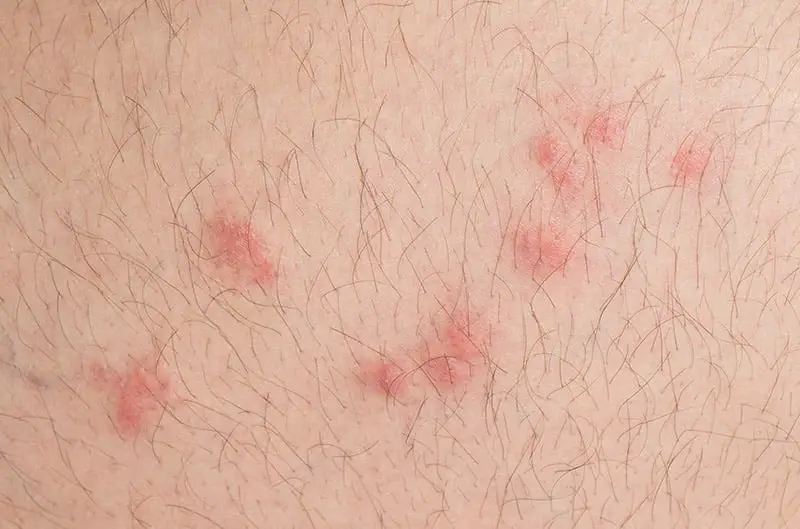
Some flea bites are associated with risks of skin diseases or skin infections. The symptoms from a flea bite generally don’t appear immediately. Instead, the reaction starts around 2-3 hours after the bite.
You might start noticing redness, the appearance of hives, and even swelling and itching around the bite site. If you are confused about where the flea bite is, look down around your legs and ankles since that’s where they primarily attack.
Although not frequently, a few different types of flea bites might lead to complications of bacterial infections.
Also read: How to Get Rid of Fleas from Clothing | 6 Proven Tips
6. Bee Sting
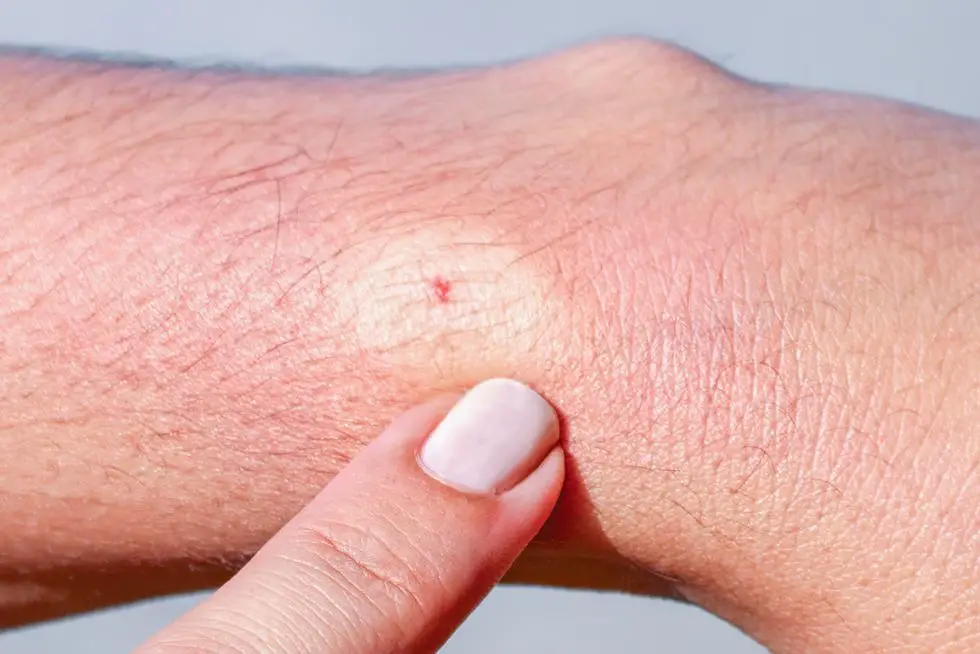
Once the bee stings you, you immediately feel a sharp pain in the bite site. The pain subsides eventually, but it leaves a dull and aching pain in the site, along with inflammation.
You might also feel itching at the site and discomfort and stiffness around the muscles where the bee has stung you.
Also read: How to Keep Bees Away from the Pool | 12 Foolproof Methods
7. Lice Bites
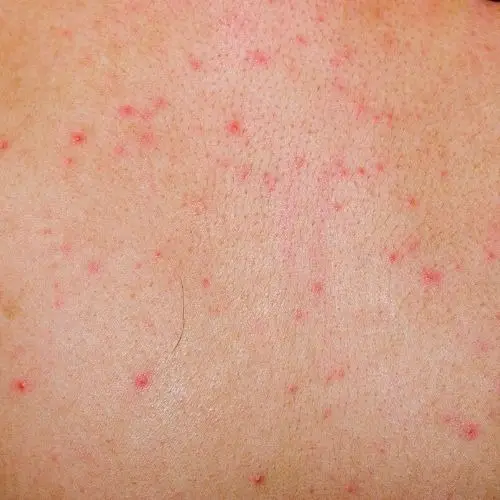
Lice are one of those parasitic bugs that live in the host’s body, suck the blood, and even lead to discomfort and pain with their bites. In most cases, lice live in the host’s hair, so you will find them primarily on the scalp, around the neck, and shoulder region.
Also read: How To Get Rid of Head Lice | 10 Easy & Effective Ways
8. Ant Bites
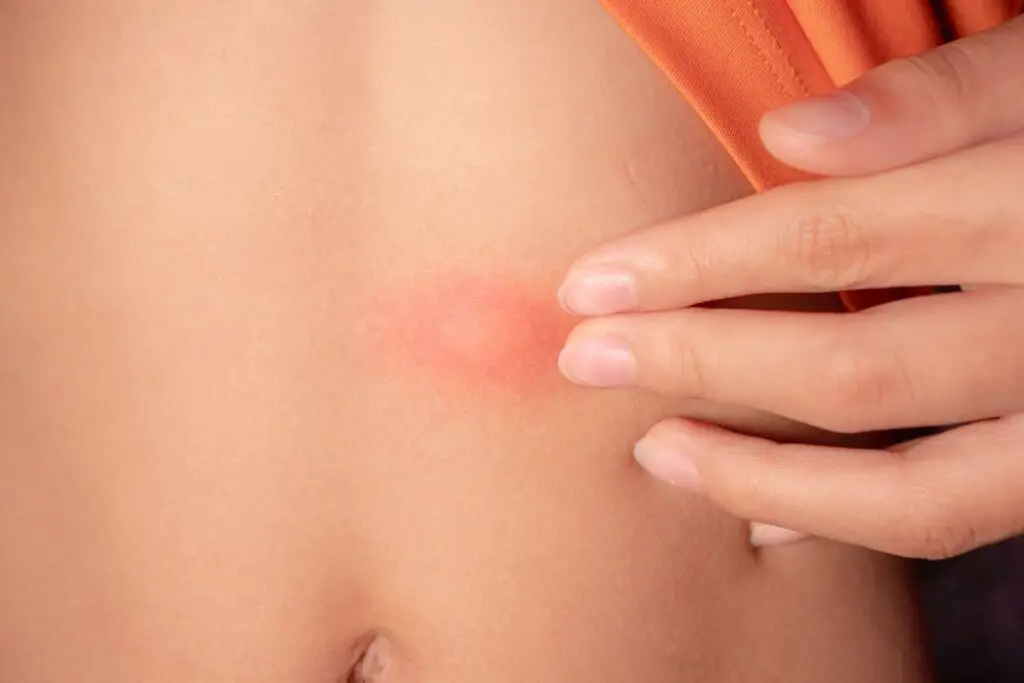
What’s unique about ants is that they bite and sting simultaneously, which causes pain, instant redness, and inflammation at the site. The most common symptom is a red skin bump on the bite site.
In most cases, ants are harmless. Their bites don’t have any severe consequences besides pain and discomfort. However, a type of ant called fire ants is poisonous. Their bites often inflict a burning sensation on the skin, which might require medical intervention.
Also read: 10 Homemade Ant Killer Safe for Pets | Tried & Tested
9. Mites and Chigger Bites
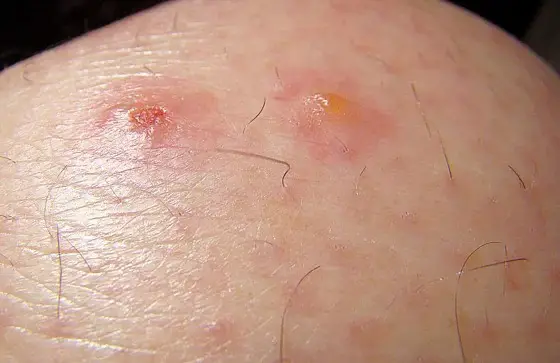
If there are two bugs whose bites irritate the skin, they must be these two. Mites and chiggers are generally harmless and don’t inflict any long-lasting implications on the skin, but their bites are painful, itchy, and very uncomfortable to deal with.
Some mites might contain scabies, which need immediate medical intervention since it is communicable.
10. Hornet Stings

Last on the list are hornet stings. Besides leaving a nasty inflammation at the sting’s site, they come with a few consequences worth investigating. The most common symptom includes a painful, itchy, red, and swollen appearance on the skin.
The most common fixes include applying an ice pack to the skin to relieve the pain and discomfort. You must consider medical intervention if the symptoms don’t recover within a few days and the swelling worsens.
Also read: 10 Home Remedies for Hornet Stings | Top Fixes that Work
These are just a handful of the common bug bites we must pay close attention to. Instead of panicking, you must make informed decisions so that the bites can be treated on time and nothing worse happens in the long run.
Frequently Asked Questions (FAQs)
How do you know which insect has bitten you?
Almost all types of bug bites have different symptoms, which we mentioned individually in the section above. We recommend that you check for and see the symptoms and then correlate them with the content mentioned above.
Is there an app to identify bug bites?
A few online applications can help you take note of the insect bite and give a rough estimate of what kind of bug has bitten you.
What can be mistaken for bug bites?
One of the most common confusions people have about bug bites is an allergic reaction since the symptoms of the two are similar: red welts, inflamed skin, itching, discomfort, etc.
What is biting me invisible?
If you feel a biting sensation but can’t spot what’s biting you, in most cases, it’s No-see-ums, small flying insects. They are minute and swift in their flight, so they are often harder to spot.
What are three signs of an infected bite?
The three most common signs of an infected bite include redness, swelling, and itching at the bug bite site.
Can Google Lens identify bug bites?
Typically, no. Google Lens will help you find similar images, which you can use to compare and identify the kind of bug bite you are dealing with.
Are bug bites always visible?
In some cases, the bug bite symptoms might not come for a few hours or even a few days. So, in those cases, you might not see visible symptoms of the bug bites on the skin.
Are bug bites harmless?
Most bug bites are harmless and don’t damage one’s health. However, some carry diseases and consequences that require immediate medical attention, so pay close attention to that.
